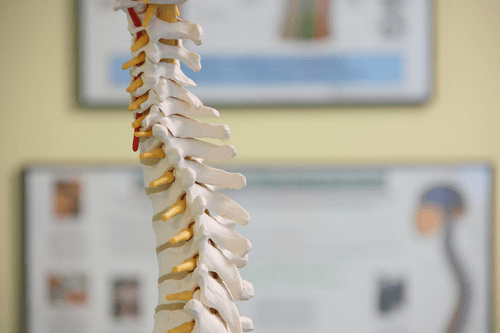 Does nagging lower back pain have you avoiding physical activity? Are you spending more and more leisure time on the computer? When it comes to physical health and wellbeing, few things influence how you feel quite like your posture. As a senior, it’s important to keep these key considerations in mind:
Does nagging lower back pain have you avoiding physical activity? Are you spending more and more leisure time on the computer? When it comes to physical health and wellbeing, few things influence how you feel quite like your posture. As a senior, it’s important to keep these key considerations in mind:
Move more, sit less
If you’re looking to reverse the effects of poor posture, the ultimate key to success is getting up and moving. Not only has prolonged sitting been linked to various lifestyle diseases and even early death, but it promotes harmful body positions like slouching, slumping, and hunching your shoulders. Experts recommend seniors:
- Get up and move or stretch at least every 30 minutes while sitting
- Commit to at least one hour of exercise for every 8 that you spend sitting
- Spend more time standing, i.e. when you eat a quick lunch, work at the computer, etc.
Stay hydrated
Did you know that as you age your sense of thirst might actually diminish? Dehydration combined with natural wear and tear on the spine can result in degenerative disc disease. This form of osteoarthritis involves the drying out and shrinking of the discs which act like cushions between your vertebrae.
Staying hydrated also serves as a clever way for moving more and sitting less - the more you drink, the more you’ll have to go to the bathroom and refill your glass or water bottle. A win-win! Plus, healthy hydration supports a strong immune system and good digestion.
Breathe deeply
If you think about it, it’s hard to take a nice, deep breath if you are hunched over and placing pressure on thoracic cavity that houses your lungs. Deep breathing serves as a great reminder then to sit up straight, lengthen the spine, and drop the shoulders down and back.
Mindfulness-cultivating practices like tai chi and yoga take this idea a step further incorporating deep breathing techniques with gentle flowing stretches, poses, and meditation. In addition to reinforcing strong respiratory health, these activities have also been shown to help relieve stress, lower blood pressure, and build bone and muscle strength.
Use assistance
If age-related wear and tear on your body is simply making it harder to practice good posture all the time, get help! Assistive aids like posture braces for your back promote correct alignment of the shoulders and spine while ergonomic seat cushions for your office chair or car provide cushioning to alleviate back and hip pain.
Mobility aids also play a key role in supporting good posture. If you use a cane or walker, for example, and it is not adjusted to the right height for you, you could be leaning over more than you should which places added stress on your back. Check with your doctor about whether your mobility aid is properly supporting you and if there are any adjustments that need to be made based on your height and weight.
Watch out for text neck
Text neck, or Forward Head Syndrome, is a very real and prevalent health risk for the millions of seniors who frequently use smartphones, computers, and other digital devices. Researchers have found that as you crane your neck forward past your shoulders and tilt your head down (as many do when using a smartphone of computer), you significantly increase the pressure placed on your spine.
Avoid text neck with simple tips like holding your smartphone in front of your face, using talk-to-text features instead of typing, and raising your computer monitor up so the very top rim is lined up to your eye level.


Comments